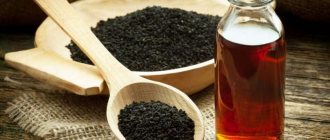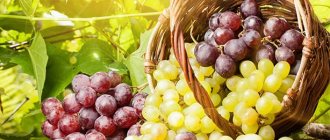Be sure to include fresh vegetables and fruits in your diet
To keep your intestines happy and working like clockwork, doctors recommend eating 25–30 g of fiber daily. They claim that most of it is found in bran and cereal products; there is also a lot of it in avocados, dried apricots, pistachios and figs. And indeed it is. But maybe it’s worth looking for something more native!? You might be surprised, but regular fruits and vegetables from your garden are also rich in dietary fiber. By eating just a couple of apples or a pear a day, you will begin to feel noticeably more cheerful and positive, and, therefore, your work at the dacha will go smoothly.
We have compiled a list of the 10 most affordable vegetables and fruits - those that can be found in almost any summer cottage. All of them are beneficial for digestion.
How to eat berries correctly with hyperacid gastritis?
In summer, the shelves are literally bursting with berries - valuable sources of vitamins. But if you have high acidity, you need to be especially careful with fresh fruits. This means you should avoid foods that lower your pH. After all, when the pH decreases, the content of hydrochloric acid in the stomach increases even more. Unfortunately, most berries are classified as such products.
At first glance, it seems that this is complete absurdity - after all, the berries are sweet! However, they all contain fruit acids, which give the fruit a rich taste. Acids irritate the mucous membrane and only make the situation worse.
Do all berries without exception become taboo for gastritis with high acidity? Not at all. The body needs natural vitamins. But you will have to eat berries under certain conditions:
- Unripe, sour, spoiled fruits are excluded immediately. Give preference to ripe and sweet ones.
- Don't eat them on an empty stomach. It is allowed to use small quantities in between meals.
- Chew the berries thoroughly. If possible, grind them in a blender.
- It is advisable to remove the skin from the berries.
- Don't eat before bed.
Chronic gastritis. What kind of fresh fruit can I have?
When the disease becomes chronic, it means that either it was neglected or there was no effective treatment and diet. In this case, fresh fruits should be consumed with extreme caution and, of course, in fractions.
For chronic gastritis, you should avoid sour berries. Let's now look at how fruits affect the stomach of a person with this disease:
- Sweet apples. For any form of disease, these products are allowed. Their number should be limited in case of a chronic illness, as well as during an exacerbation. Moreover, you should eat them only in grated form, without the skin.
- Banana. This fruit has a softening effect. Banana gently envelops the mucous membrane. It also prevents irritation before taking medications or foods with irritants. Therefore, it is useful to eat a piece of banana before eating. About ten minutes before eating. In this way, intestinal vulnerability can be reduced.
- Pears. Doctors consider this fruit a real panacea. Pear strengthens the walls of the stomach and tones them. The fruit has an astringent effect. It contains a lot of pectin and vitamins. Pear has a positive effect on peristalsis, stimulating it. A couple of fruits a day is good for health.
- Persimmon. Thanks to its viscous composition, it is useful for those diagnosed with gastritis. It is worth eating ripe fruits.
- Berries. It should be used as part of jelly and jelly. Fruits with small seeds, as we have already said, should be discarded.
Is it possible to eat berries if you have hypoacid gastritis?
To some extent, people with low acidity are luckier. They can eat any sweet, even sour fruits. This is necessary to normalize the acid-base balance. The amount of hydrochloric acid in gastric juice increases.
The only condition that must be observed is the consumption of berries baked or boiled. This will make it much easier for the stomach to cope with the process of digesting coarse fiber. For example, you can bake them in the oven, cook a delicious compote or jelly, or make a mousse.
Dish recipes
For gastritis, it is possible to eat berries that are properly collected and dried in accordance with the technology. Fresh fruits for harvesting must be firm, ripe and not wormy. Berries that fall from the tree on their own should be collected. Prunes are dried in the open air.
Excessive consumption of the product will result in diarrhea and abdominal pain. To avoid trouble, stick to the recipe.
- Remove the seeds from the berries. Grind the pulp and mix with an equal amount of liquid honey. Take the mixture one spoon at a time before going to bed, followed by half a glass of boiled water.
- It is permissible to mix equal quantities of ground prunes, figs and liquid natural honey. Take a teaspoon of the mixture before bedtime.
You don't have to eat the same soups every day. The menu for erosive gastritis can be made varied and tasty even without sauces and spices. You just need to know the recipes.
Zrazy:
- Grind 200 grams of lean beef in a blender.
- Mix it with crackers.
- Make cakes from the minced meat.
- Place boiled rice with butter in the center of each.
- Make “cutlets” from meat and rice.
- Place them in the slow cooker for 15 minutes.
Rice soup:
- Put low-fat broth on the fire and pour rice into it.
- When it is partially boiled, chop the parsley root and carrots.
- Grind the soup in a blender.
Meatballs:
- Grind the fish fillet.
- Crumble the crackers and add to the fish.
- You can add a little salt
- Make meatballs.
- Cook in a steamer.
Cauliflower:
- Cook finely chopped cauliflower for about 40 minutes.
- Add raw eggs to it and stir.
- Continue heating until fully cooked.
You can eat salads made from boiled vegetables, season them with vegetable oil. Season chopped fruit with yogurt. Mix porridge with banana or honey. And make a soufflé from meat or fish.
Knowing what fruits you can eat in the absence of pronounced signs of the disease, you should also know what is acceptable to eat during an exacerbation of gastritis. The following fruit dishes can be eaten for any form of gastritis.
Ingredients: cherries (400 g), 7 glasses of water, 2 tablespoons of potato starch and a glass of sugar.
Baked pears
Pears can be baked in the oven for dessert or as an independent dish. The washed fruits are cut into 2 parts and placed on a baking sheet covered with baking paper. If there are no contraindications, a few drops of honey are dripped onto each pear. Cover the baking sheet with food foil and place in an oven preheated to 1800° for 25 minutes.
https://youtube.com/watch?v=dmXeGmBI8Oc
Proper nutrition is the key to a full life. Understanding, for example, whether it is possible to eat grapes with gastritis, and if so, what type and in what quantity, will help the patient to maintain the functionality of his own body in a disciplined manner. Gastritis, fruits and other fruits are not prohibited, but require careful handling of the stomach.
Knowing what fruits you can eat in the absence of pronounced signs of the disease, you should also know what is acceptable to eat during an exacerbation of gastritis. The following fruit dishes can be eaten for any form of gastritis.
Baked pears
You can eat deliciously even with a limited diet, the main thing is that the menu is balanced. You can prepare delicious and healthy dishes using the following recipes.
Semolina with honey
Beat one egg yolk with twenty grams of liquid honey (preferably with a mixer) and add to the cooked porridge. The dish is ready, eat with a piece of butter.
Pumpkin soup
Pour three glasses of milk into a saucepan (mass fraction of fat content no more than 2.5%), bring to a boil. Gradually add a couple of tablespoons of semolina and, without removing from the heat, stir for ten minutes.
The pumpkin is cleaned, cut and boiled in a separate bowl. Then puree until smooth and transfer to the resulting porridge. Stir, add a pinch of salt, a little sugar, and boil again.
Fruit compote
Pour one liter of clean water into the pan and boil. Add apples and a few tablespoons of sugar (depending on taste preferences) and leave for five minutes. Then add cherries and continue cooking for a quarter of an hour. The finished drink is settled and filtered.
Dates
Dates are also classified as berries. In the East they are called “bread of the desert.” Despite the rich content of vitamins, oils and pectins, they take quite a long time and are difficult for the stomach to digest. If you really like dates, even at the stage of remission, use them in dried form, add them to baked goods or compotes.
Olives in the diet
What are the benefits of olives? Olives have a beneficial effect on the functioning of the entire system - the intestines, stomach, pancreas. It is recommended to drink 1 tbsp of olive oil every day. spoon before breakfast, lunch and dinner. Approximately 20-30 minutes before meals.
This product, like apples, contains pectin. This substance removes toxins from the body.
Raspberries
For many children and adults, raspberries are a favorite treat. After all, in addition to the sweet, rich taste, it also smells pleasant. The medicinal properties of the berry were noticed by our ancestors. It contains a lot of healthy fiber and essential oils. Raspberries also contain some minerals, coumarin. It can be used for food in the form of jam, marmalade or jellies. Raspberries are often used to make compotes and fruit salads.
For gastrointestinal diseases, it is not recommended to consume it in large quantities. But in moderate ones you can - quickly make up for the lack of vitamins. The same can be said about raspberry juice, which will not cause harm in reasonable quantities.
Table No. 1 for ulcers. Nutrition rules
Nutrition rules should be followed strictly. You cannot treat an ulcer carelessly. There is a high risk that the ulcers will develop into stomach cancer. The gastric mucosa is completely renewed in a few days. Therefore, if you take good care of the treatment, the stomach can be cured.
But the daily menu has a huge impact. It is not recommended to eat many fruits if you have a stomach or duodenal ulcer. Others, on the contrary, due to their composition, are a remedy for inflamed mucous membranes.
How to eat? Firstly, it is important not to drink after eating for at least half an hour. It is better to eat 5-6 times a day, in small portions, so as not to overload your stomach. The diet needs to be nutritious so that it contains many micronutrients, but less fat. All food must be properly processed and moderately heated. It is better to reduce the amount of salt in the diet. The best diet for a patient with an ulcer is dietary food No. 1, where there is a place for healthy cereals, soups, vegetables and fruits, but no place for fried and fatty foods.
In our article we will discuss the benefits and harms of the most popular and most beloved fruits for the gastric and duodenal mucosa.
Cranberry
Cranberries have many truly unique properties. Let us briefly list them:
- Rich composition of glucose, fructose.
- Anti-inflammatory effect.
- A huge amount of natural acids.
- Availability of vitamins.
The components contained in cranberries are very useful. However, such berries are prohibited for gastritis of the stomach with increased secretory activity. Even compotes cause irritation to the mucous membranes. So the cranberries will have to be replaced with something else.
Cowberry
In our country, lingonberries do not grow everywhere. However, it is not difficult to find it in the supermarket. But it’s worth looking for – and here’s why:
- Rich in microelements, B vitamins, as well as C, A and E.
- Contains fructose, flavonoids and phytoncides in large quantities.
- Lots of pectin and carotene.
In what form are lingonberries eaten? It is best to prepare fruit juice, make jelly or jam. The unique composition of the berry allows it to be used in the treatment of anemia and colds. And also used for preventive purposes: against tuberculosis, heart attacks, gastritis, various inflammations. Need to lose weight or get rid of depression? Eat more lingonberries!
With increased acidity, it is undesirable, since it itself is acidic. But it perfectly normalizes the acid-base balance in the hypoacid form.
List of alkaline fruits: what are the benefits of figs and peaches
The top healthiest fruits continue to be figs and peaches. Figs are a highly alkalizing fruit, also known as “fig” and “wineberry”. Fresh and dried fruits have dietary properties, which are consumed only when fully ripe.
Fig fruits have a high content of glucose, fructose and sucrose, they contain proteins, fiber, pectin, organic acids (malic, citric and acetic), tannins, and enzymes. This fruit is rich in vitamins A, C, B1, B2 and microelements, especially potassium, sodium, phosphorus, magnesium and iron.
Here's what the fig fruit is good for: it has a beneficial effect on the functions of the gastrointestinal tract, nervous system, heart and blood vessels, and helps normalize cholesterol and blood sugar levels. The fruit is useful for inflammation of the mucous membranes of the stomach and intestines, poisoning and impaired renal function.
Fig decoctions have antipyretic and diaphoretic properties. Recent studies have shown that figs are also useful as a means of preventing cancer.
What other fruits are good for the body and used in an alkaline diet?
Peach is a delicious and healthy alkaline fruit with juicy, sweet pulp and a delicate aroma.
Since ancient times, not only the delicacy, but also the healing qualities of the peach have been known; it is not for nothing that in China it is considered a symbol of longevity.
Peach pulp contains sugars, organic acids (malic, citric, tartaric), vitamins C, E, K, PP, group B, carotene, mineral salts of potassium, iron, phosphorus, manganese, copper, zinc, selenium and magnesium, pectins and essential oils. The kernels are rich in almond oil and glycosides.
Peach is a dietary fruit and is often included in various therapeutic diets. The pulp and juice of the fruit have a pronounced laxative effect, improve digestion, suppress putrefactive processes in the intestines, increase appetite and acidity of gastric juice, have diuretic properties, and strengthen the cardiovascular system.
Eating peaches helps fight depression and chronic fatigue syndrome, increases resistance to the development of malignant tumors and inhibits the aging process.
Strawberry
When patients ask what berries are good for gastritis, they often mean strawberries. Together with raspberries, strawberries are the main delicacy of summer. Although it seems sweet, it still has a slight sourness. With prolonged consumption of strawberries, patients with hyperacid gastritis experienced heartburn and other unpleasant symptoms.
If you eat some strawberries and feel worse, try replacing the fresh berries with compote. But when the acid in the stomach is produced in insufficient quantities, strawberries and wild strawberries are highly recommended.
Causes of stomach and duodenal ulcers
Inattention to your diet, frequent smoking, the habit of eating too hot and fried at night and cold hot dogs with mustard during the day are all unfavorable factors that lead to stomach problems. In particular to gastritis, and then to ulcers. Helicobacter bacteria aggravate inflammation of the mucous membrane. But most often they are not the root cause of the disease, because bacteria are also found in the stomach of completely healthy people who never complain of pain. But it doesn't harm them.
The ulcer is already being treated in hospital. Pain from ulceration of the protective mucous membrane is very stylish. The patient is practically unable to work. After treatment in the hospital, the person is sent home. But first they inform you about the need to follow special dietary rules.
A diet called “Table No. 1” is prescribed - gentle nutrition for stomach and duodenal ulcers. This diet places particular emphasis on fresh fruits and vegetables. However, they must also be used wisely.
Cherry
Ripe, juicy cherries, although they attract with their unforgettable taste and shape, are considered undesirable products with increased acid production. But with the hypoacid form of the disease, they become an excellent way to increase it. The composition of cherries is very diverse - from vitamins and organic acids to iron. In addition, the fruits of this juicy berry have an antiseptic and hemostatic effect. Regular consumption significantly strengthens blood vessels and even treats arthritis.











